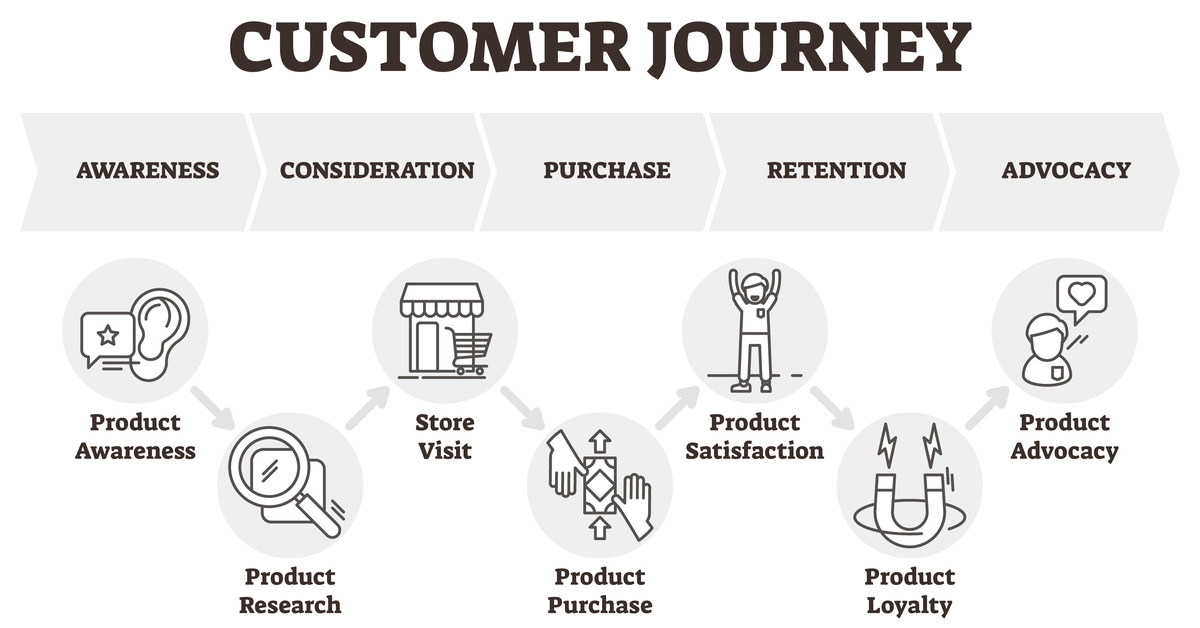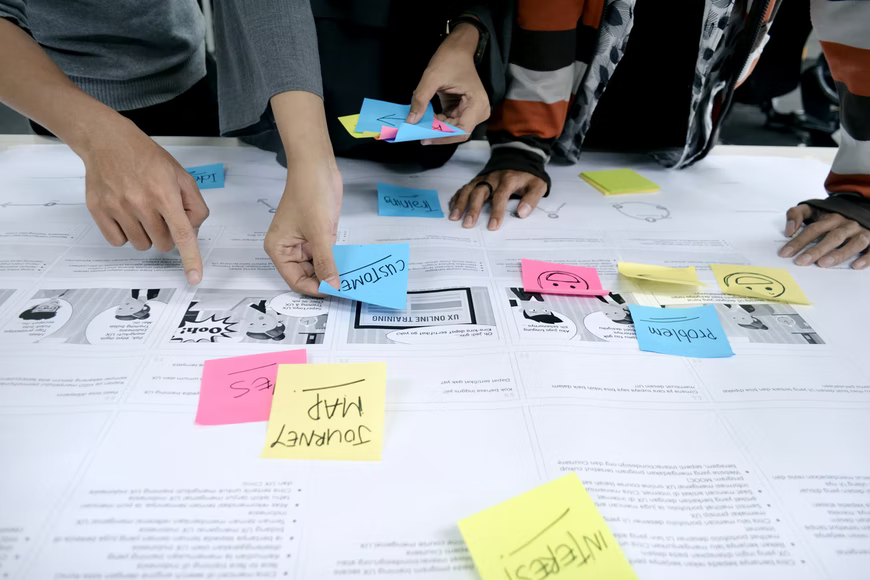
Customer
Journey
One of the never-ending tasks for marketers is to uncover exactly what their audience is doing when they interact with their content, products or services. With this in mind, the customer journey has become a top priority for brands. But what does it mean to have a better customer journey? The customer journey goes beyond simply knowing where your customers are going and being there for them when they arrive.
To create better experiences, companies need to understand how their customers experience the world through multiple points of view and touchpoints. With every interaction from awareness, consideration, and commitment you can learn more about your target audience’s thoughts and desires while producing positive effects such as brand advocacy.
Unbelievable Facts About Customer Journey.

The Customer Journey Mapping Process:-
Awareness
is the first stage of a customer’s journey when they are becoming aware of your product and or brand. The top priority at this stage is to have a high-level understanding of consumer behavior to understand their interests and purchase motivations. At this point, brands need to promote themselves on social media, build a strong blog, and utilize SEO tactics to attract potential customers.
Consideration
is the second stage where consumers begin to evaluate information about your product or service based on their needs and wants. At this stage, consumers are looking for brands that provide detailed information about their product including price ranges, quality, functionality and other essential details which could either make or break a sale.
Purchase
is the third stage of a customer’s journey where consumers have decided to purchase a product or service based on their previous interactions with the brand. At this stage, brands need to remember why their target market wants to purchase from them to provide the right information and presentation before, during and after the purchasing process.
Loyalty & Advocacy
loyalty is the final stage of a customer’s journey where customers develop loyalty for your brand, which results in repeat business and positive word-of-mouth feedback about your products or services. There are two types of advocacy – internal and external – both of which encourage customers to share their opinions online or through offline channels.
Transition
is the last stage of a customer’s journey where customers move from being loyal to becoming brand advocates. At this stage, companies should use their customer file to share what makes them unique and create strategies for meaningful offers that will leave customers feeling enriched.

How to Create a Customer Journey Map?
Step 1- Create a Customer Journey Wheel:
The first step is to create a customer journey wheel that outlines the stages of the buying process. The size of each stage should be proportionate to its influence on the customer’s experience. You can even create an easier to read a version that includes just the highlights.
Step 2- Determine Key Influencers:
Once you’ve created your customer journey, it’s important to determine what factors influence your customers’ path to purchase, how they interact with your brand and what they expect in terms of engagement and brand loyalty. This information will help you create more effective strategies for each stage of the buying process and increase sales through better customer interaction and satisfaction from start to finish.
To achieve this, you need to:
1. Know the customer’s end goal and identify their critical problem.
2. Identify all your offer(s) and determine how they fit in with the needs of the target audience.
3. Define your selling strategy based on what you know about your customers by understanding their needs and solving their problems.
4. Determine who, when and how to engage with your customers at each stage of the journey so that you can meet their expectations along the way.
There are two ways you can use customer journey maps:
1- As a standalone tool.
2- As an assessment tool.
When used as a standalone tool, you can use customer journey maps at every stage of the buying process to build strategies for better engagement and results, including:
- 1- The creation of buyer personas and your marketing content strategies.
- 2- Your social media strategies and social media ads.
- 3- Your email marketing strategies and emails.
- 4- Your website design, cleanliness and organization of information to build trust in your brand.
- 5- Your landing pages and how they specifically target the needs of your audience during each stage of the buying process (awareness, consideration and decision).
If you want to get into the ever-growing world of “Customer Journey”, then OCP Academy is where it’s at. They’ve got an online course that teaches people newbies what they need and helps them learn more about how this industry has become increasingly popular over time!

